Configure Now
Items in Your Cart0
0Items in Your Cart
Start building your packageShop Now
Divers play an important role in ocean exploration, infrastructure, aquaculture, military, commercial, and salvage operations - from performing inspections, to item retrieval, or specimen collection, divers are invaluable in the marine and industrial industries.

Human divers offer several advantages over ROVs in underwater operations. Their ability to think critically and adapt in real-time enables them to handle complex, unstructured environments with precision. Divers can perform intricate tasks that require manual dexterity and problem-solving skills, which can be challenging for ROVs.
Divers can also provide a tactile and visual assessment that machines cannot replicate, making them invaluable for detailed inspections and maintenance tasks. These human elements ensure that divers remain essential for certain underwater operations despite advancements in ROV technology. Let’s take a closer look.
Divers allow for more precise and delicate interaction with the marine environment, leveraging their ability to physically interact with objects and perform complex manual tasks underwater. Commercial divers can use specialized tools, inspect structures, perform repairs, and carry out maintenance activities, and this hands-on manipulation allows for greater flexibility and adaptability in challenging underwater environments.
Commercial divers are trained to think critically and problem-solve quickly. They can often encounter unexpected situations, such as tangled cables, debris, or equipment malfunctions, and need to devise solutions on the spot. Their ability to adapt, troubleshoot, and implement solutions efficiently contributes to the successful completion of tasks.
Divers can make immediate decisions and adjustments based on the real-time information they gather during their dives. They can assess the conditions, identify potential hazards, and modify their approach accordingly. This on-the-spot decision-making ability is particularly valuable in dynamic situations or emergency scenarios where quick action is required.
While human divers bring critical skills and adaptability to underwater operations, their use comes with several challenges and disadvantages compared to ROVs. The physical limitations of divers, such as restricted operational depths and limited time underwater due to safety and physiological constraints, can impede project timelines and scope. The cost of training, equipping, insuring, and deploying divers is also often significantly higher than the purchase cost of ROVs.
Safety is a primary concern when utilizing human divers for underwater inspections. The risk of decompression sickness, hypothermia, and entanglement, among other hazards, poses substantial threats to diver health and safety. Emergency situations can escalate quickly underwater, and the necessity for immediate medical response adds complexity and risk to diving operations. Mitigating these safety risks often requires extensive planning, support infrastructure, and adherence to stringent safety protocols, further complicating the use of human divers.
Low visibility underwater presents significant dangers for divers, making certain tasks more perilous and increasing the likelihood of accidents. The limited ability to see and maneuver in such conditions magnifies the danger, making it critical for divers to have proper training and equipment to manage these scenarios.
Entanglement Risks: In environments with poor visibility, divers face a higher risk of becoming entangled in underwater debris, fishing nets, or other obstructions. Entanglement can lead to panic, increased air consumption, and potential drowning if not resolved quickly.
Sharp or Dangerous Objects: Low visibility also heightens the risk of encountering sharp or hazardous objects, such as broken metal, glass, or marine life. Divers may inadvertently come into contact with these dangers, leading to injuries that are difficult to treat underwater. In certain areas, divers might also encounter contraband or hazardous materials, posing further threats to their safety and complicating the mission.
Entrapment in Confined Spaces: Operating in confined underwater spaces, such as shipwrecks, caves, water tanks, or pipelines, is inherently risky. Low visibility conditions amplify these risks, as divers may become disoriented, trapped, or unable to find their way out.
Risk of Collisions: In maritime environments, low visibility significantly increases the risk of collisions with vessels, underwater structures, or other divers. The constant activity and close proximity of maneuvering ships increases this risk. The inability to see hazards in advance can result in accidents that may cause severe injuries or fatalities. Murky water or sediment stirred up during vessel operations can further obscure divers' vision, making it difficult to anticipate the movements of other vessels and avoid dangerous encounters. Precise navigation and effective communication are critical to mitigating these hazards.
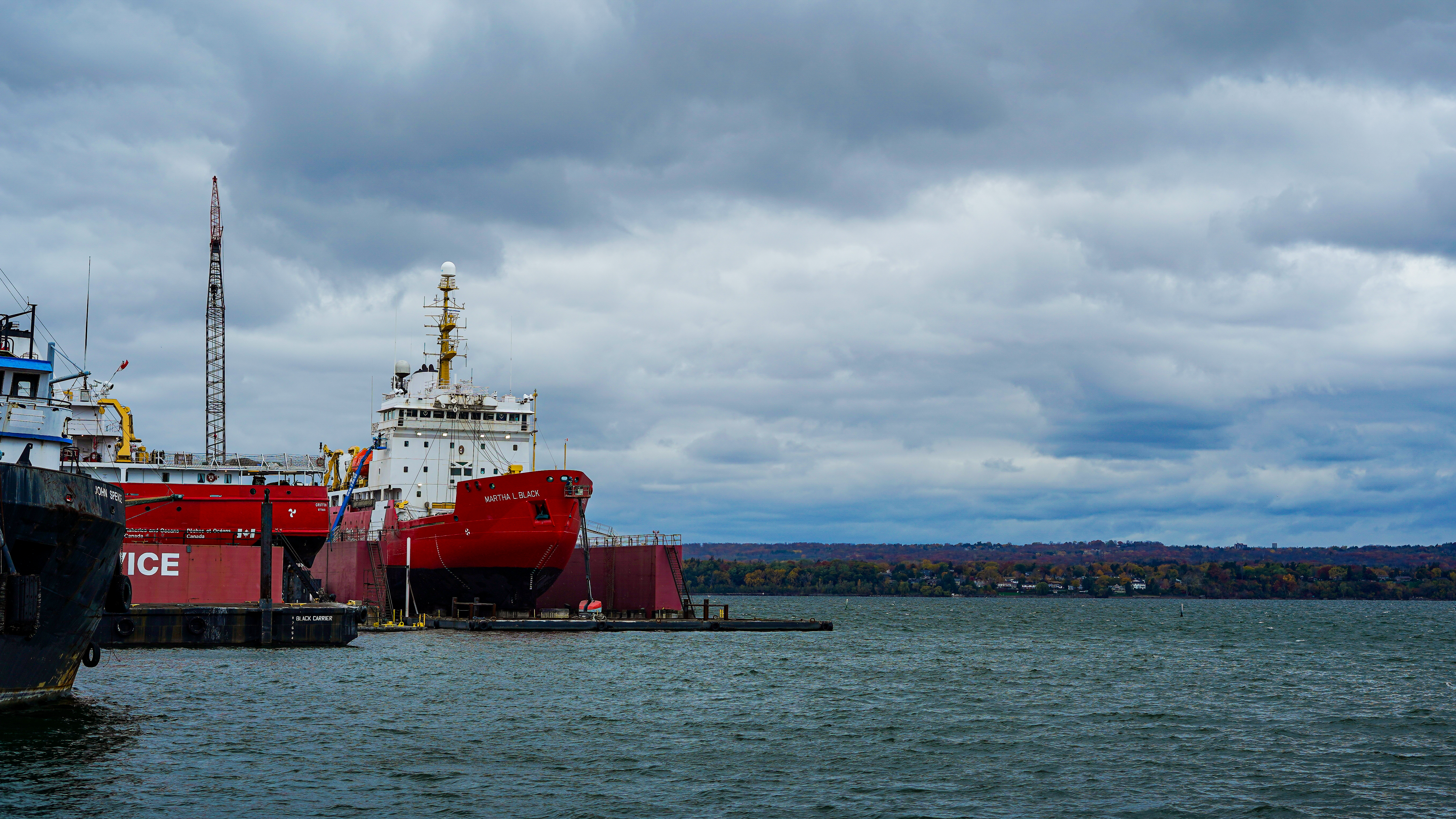
Blackwater Diving: Blackwater diving, performed in conditions where there is little to no ambient light, represents some of the most challenging and dangerous diving scenarios. In these situations, divers must navigate complete darkness, relying solely on artificial light sources and their training. The dangers of blackwater diving include disorientation, difficulty in identifying potential hazards, and an increased risk of encountering dangerous marine life. The lack of visibility and the psychological stress of operating in pitch-black environments can lead to heightened anxiety and impaired decision-making, making blackwater diving one of the most hazardous forms of underwater operations.
Working in strong currents presents an exceptionally perilous situation that can lead to the risk of drowning. Strong currents possess a tremendous amount of kinetic energy, capable of dragging individuals underwater, sweeping them away from their intended path or safety zones and support systems, and can cause them to collide with underwater obstacles or be trapped against structures. The force exerted by these currents can be deceivingly powerful, making it difficult for even the strongest swimmers to maintain control and stability.
Diving at great depths also increases the risk of hypothermia, as water temperatures drop significantly the deeper one goes. Divers are also limited in how long they can spend at depth, with longer and slower ascents required the deeper they go to avoid decompression sickness.
Typically, recreational divers can reach depths of up to 40 meters (130 feet) for no more than 20 minutes, while technical divers can go as deep as 100 meters (330 feet) with carefully planned decompression stops extending their total dive time. However, even with these precautions, the physical and physiological challenges of deep diving pose significant risks.
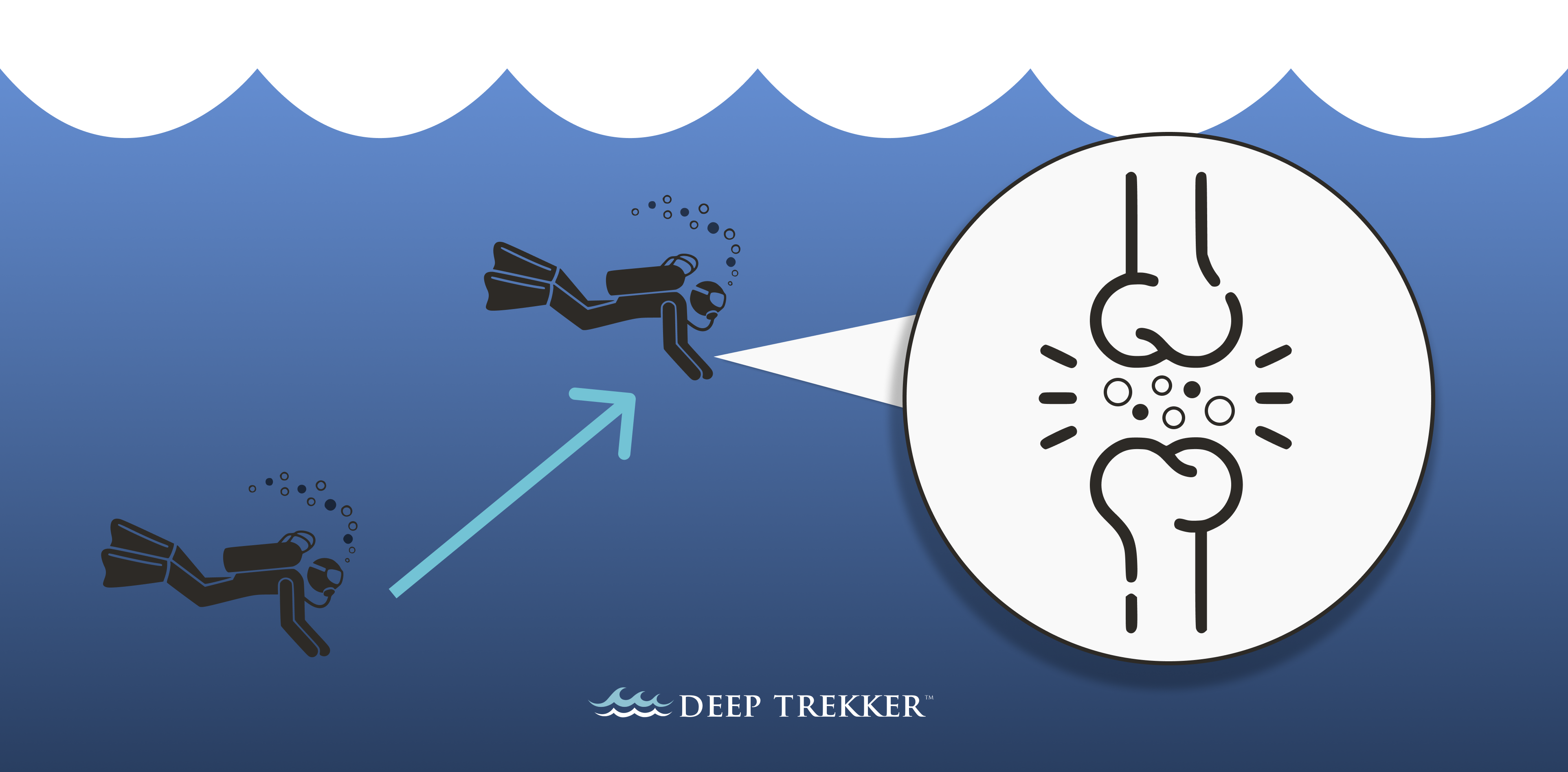
The risk of equipment malfunctioning also jeopardizes the safety of commercial divers. Diving equipment, such as breathing apparatus, communication devices, diving suits, and umbilicals (connecting the diver to the surface), must be meticulously maintained and regularly inspected for functionality and integrity.
Malfunctions in diving equipment can compromise the diver's ability to breathe, communicate, or maintain control underwater. For example, a failure in the breathing apparatus can lead to a loss of air supply, putting the diver at risk of asphyxiation. Similarly, a malfunction in the communication system can hinder the diver's ability to relay vital information or receive instructions, impeding their coordination with the support team on the surface.
Communication is also generally limited throughout dive missions, making any failure in the system even more critical. The complexity and interdependence of the equipment mean that even minor issues can escalate quickly, presenting serious risks to diver safety and mission success.
Utilizing human divers for underwater inspections and operations can be both time-consuming and costly. Commercial divers are highly trained professionals, and their services come at a premium. Depending on the complexity and duration of the task, the cost of hiring a commercial diver can range from $1,500 – $5,000 USD per day for a small job and can cost significantly more depending on the complexity of the task being performed, with additional expenses for specialized equipment and support personnel. These costs can quickly mount, especially for long-term projects or those requiring deep or hazardous dives.
Scheduling divers can also be challenging. The availability of qualified divers may be limited, leading to potential delays in project timelines. Coordinating their schedules, ensuring they are well-rested, and meeting safety regulations can add more layers of complexity to planning.
The process of gearing up for a dive is also time-intensive. Divers must undergo thorough safety checks, get geared up, and perform pre-dive inspections, which can take several hours before they are ready to enter the water. This preparation time, combined with the need for decompression stops during ascent from deeper dives, further extends the total time required to complete underwater tasks. These factors make human divers a less efficient option compared to ROVs, particularly for projects where time and budget constraints are critical.
ROVs have proven to be extremely beneficial tools for conducting underwater operations. Operators can control them from the surface and safely search deeper and more dangerous areas without putting divers at risk. They can also be equipped with a range of modular tools, such as sonar and other sensors, manipulators, laser scanners, and ultra high-definition cameras that can capture and record data in real time.
The combination of these features enhances the efficiency and effectiveness of underwater operations. By minimizing the risks to human divers and providing robust tools for data collection and manipulation, ROVs significantly contribute to the safety, precision, and overall success of underwater missions.
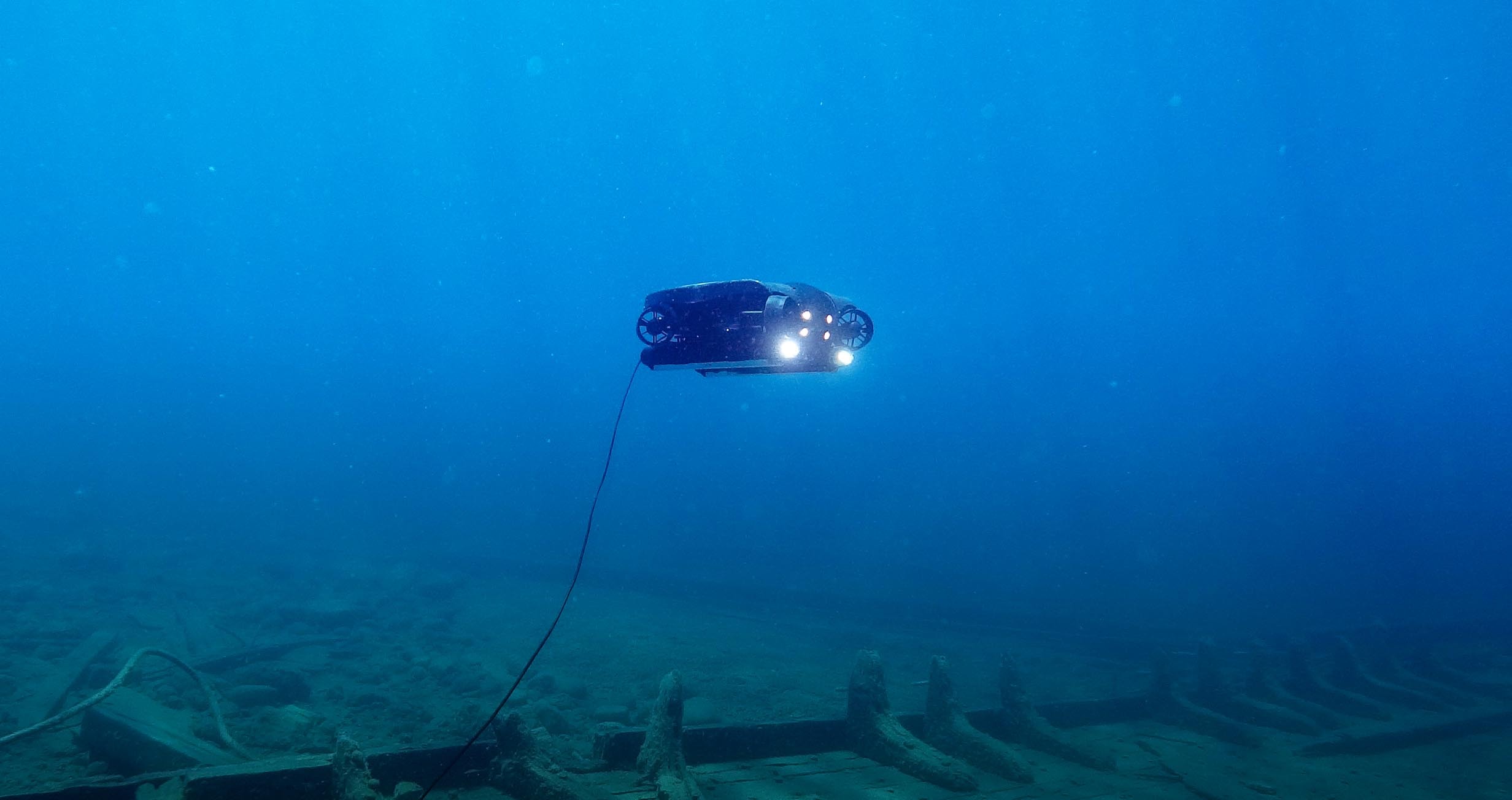
ROVs offer several distinct advantages over human divers in underwater operations.
They can perform in hazardous environments and extreme depths where human divers might face significant risks, eliminating the potential for injury or decompression sickness.
ROVs are not limited by physical constraints, allowing them to stay underwater for extended periods and perform tasks without the need for frequent breaks or decompression stops.
Their advanced technological capabilities, including high-resolution cameras, sonar systems, and various sensors, provide comprehensive data collection and real-time monitoring that can improve the accuracy and efficiency of inspections and operations. ROVs also reduce the logistical and financial burdens associated with deploying and supporting human divers, making them a cost-effective and reliable choice for many underwater tasks.
Mike Fletcher, a professional commercial diver and renowned wreck diver, states that “there is always the risk of injury or threat to the person diving”. He explains that whenever there is the chance to use something other than a person to perform a task, the risk of injury to the diver is eliminated.
ROVs are designed to operate in challenging conditions such as high currents, low visibility, extreme depths, and confined spaces, thereby protecting human divers from potential dangers. For instance, Deep Trekker ROVs can function at depths over 300 meters (1000 feet), far beyond the safe reach of human divers. This capability ensures that divers only need to undertake the most critical and less hazardous tasks, greatly reducing their risk.
On virtually any project, using ROVs to survey dive areas and assess tasks before deploying a diver significantly improves safety, while also saving considerable time and money. By conducting this pre-dive assessment, stakeholders gain a clear understanding of the scope and specific requirements of the mission. Proper preparation ensures that divers enter the water with a well-defined plan and all necessary equipment in place, minimizing uncertainties and optimizing the overall execution of the operation. This process eliminates the uncertainty of "going in blind," as the detailed video and sensor data gathered by the ROV allows for a thorough understanding of the site.
ROVs can be used alongside divers to aid with real-time monitoring and communication, significantly improving safety during underwater operations. By providing live video feeds and data from the ROV, the surface team can closely observe the divers and their environment, allowing for immediate assessment and intervention if necessary. This continuous oversight ensures that instructions and updates are communicated promptly, enabling quick responses in emergencies and better coordination.
ROVs also contribute to better team decision-making. The data and visuals provided by the ROV allow a broader range of personnel to analyze the situation and brainstorm solutions. This collaborative approach means that divers no longer have to independently assess the situation and devise solutions while operating on a limited supply of oxygen. Instead, they can rely on the collective expertise of the team, leading to more informed and effective decision-making during underwater operations.

Time is a valuable commodity for any team or operation, making efficiency one of the key benefits of utilizing ROVs. Traditional methods often require extensive coordination and scheduling, making them time-consuming. In contrast, underwater robots can be deployed in minutes by a single operator with almost no prep time and can stay submerged for much longer periods than divers.
With hybrid options of long-lasting batteries or direct power, ROVs have virtually unlimited bottom time. Their ability to operate at depths beyond the limitations of human divers also enables them to reach hard-to-access areas, allowing for more thorough and accurate searches and inspections.
ROVs are always ready to splash, making them an ideal tool for immediate inspection needs. This readiness contrasts with the need to schedule and wait hours or even days for a dive crew to become available, providing a significant advantage in time-sensitive situations.
Cost-effectiveness is another important consideration. Utilizing ROVs eliminates the need for extensive diver training, insurance, specialized equipment, and associated logistical expenses. These underwater robots can be operated remotely from the surface, reducing the number of personnel required on-site and minimizing travel and accommodation costs.
Integrating ROVs alongside divers also reduces the duration divers spend underwater, cutting down on hourly costs and reducing the consumption of oxygen. This approach is not only cost-effective, but also dramatically improves the efficiency and safety of operations.
ROVs represent an upfront investment that pays dividends with each use. Unlike divers, who incur recurring costs for training, equipment maintenance, insurance, and operational deployments, ROVs provide a substantial cost-effective solution over time. This financial efficiency makes ROVs a strategic investment for organizations seeking reliable and sustainable underwater inspection capabilities.
ROVs excel in capturing high-quality data that can be analyzed in real-time and saved and archived for future use. Equipped with advanced features, such as an enhanced 4K camera, ROVs can record video and take high-resolution photos, utilizing dewarping, turbidity, and auto-white balancing filters to enhance visibility in murky waters, creating optimal and accurate viewing conditions. Their photogrammetry capabilities also enable 3D modeling of underwater structures for further analysis and monitoring of assets over time.
ROVs are also equipped with sonar technology that can identify anomalies along surfaces, even in low visibility conditions. This capability is important for detecting objects such as sacrificial anodes along ship hulls, enhancing inspection accuracy and data collection. These vehicles offer versatile maneuverability, allowing them to navigate straight or laterally while angling and rotating equipment, such as cameras, sonar, and tools, towards areas of interest.This capability makes ROVs ideal for comprehensive sweeping inspections.
ROVs can also be customized with various attachments to meet specific customer needs. Attachments such as grabber arms, cathodic protection probes, and ultrasonic thickness probes expand their functionality for diverse applications across many industries from ocean science to port security to nuclear facility inspections, and much more.
ROVs are also equipped with location mapping capabilities, allowing customers to precisely track and document where data was collected. This feature improves accuracy and traceability in data analysis and reporting, bolstering the overall reliability and effectiveness of underwater operations.
While ROVs provide significant advantages in underwater operations, they also come with inherent limitations that divers do not face, such as:
These limitations emphasize the complementary roles that ROVs and divers can play in underwater exploration and inspection, each leveraging their unique strengths to achieve comprehensive and effective results.
ROVs have potential limitations when compared to human divers in terms of adaptability. They are typically configured for specific missions and equipped with specialized tools and sensors that may not be versatile enough to address unexpected or unique situations. Unlike divers, ROVs rely on human operators and there is often a delay compared to divers who can rely on quick judgment, reflexes, and instincts to quickly adapt. However, most applications involve an operator who has the capability to make on-the-spot adjustments and creatively solve problems in response to unforeseen challenges.
Dexterity and the lack of tactile feedback are also barriers when using ROVs in underwater operations. While they can be equipped with robotic arms, replicating the fine motor skills and flexibility of human hands is challenging. This limitation affects the ROV's ability to perform intricate tasks that require precise manipulation or delicate handling of objects. ROVs are also unable to assess texture or weight directly, which can make it challenging to perform tasks requiring precise manual manipulation or delicate repairs.
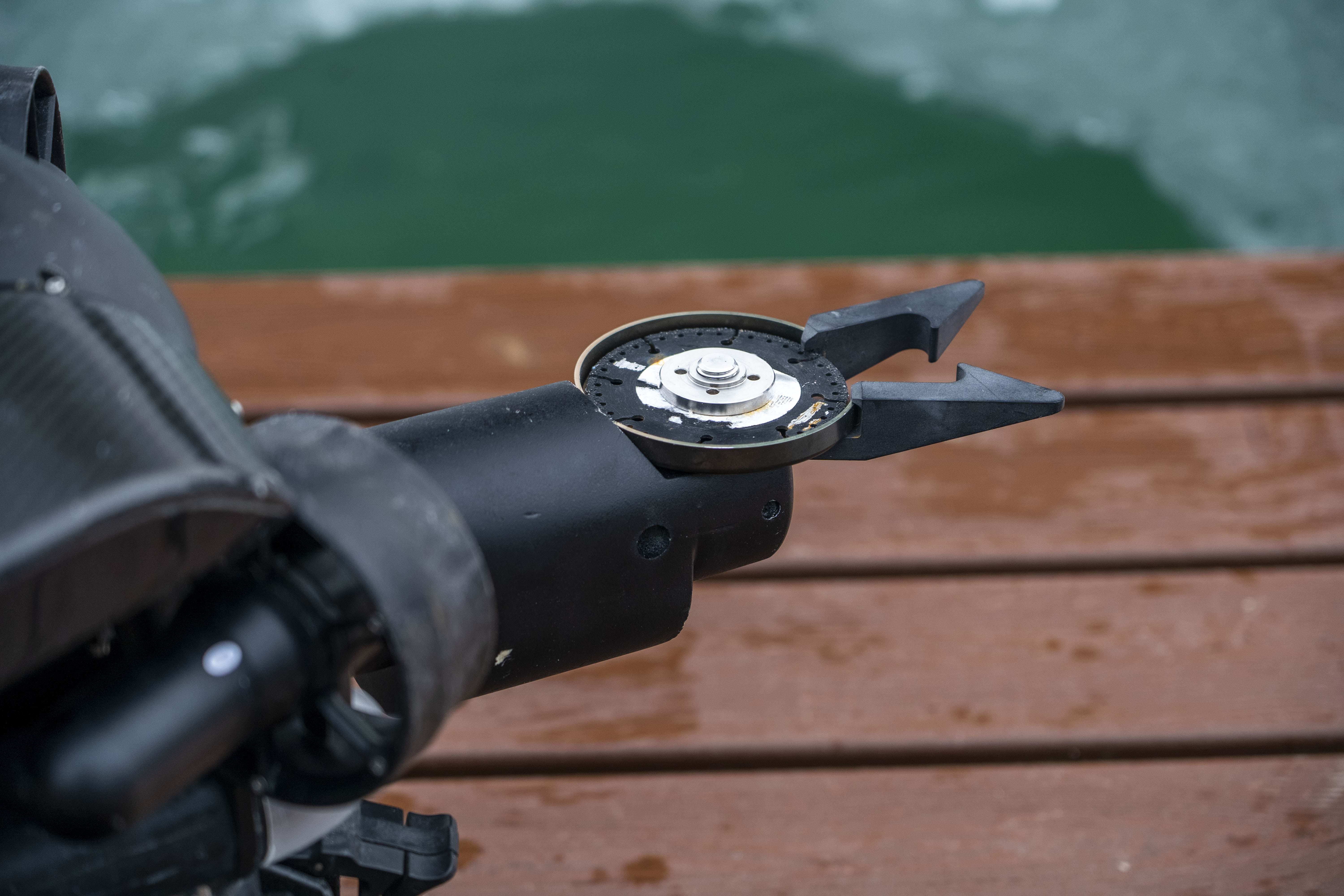
ROVs are limited by battery life, which restricts their underwater operation time and requires careful planning to maximize efficiency, further complicating delicate task performance that requires time and dexterity. This constraint can be mitigated with a topside direct power kit, which provides a hybrid power option and extends the ROV's operational capabilities indefinitely.
When comparing divers and ROVs, it's important to recognize that it's not a matter of choosing one over the other. Both divers and ROVs have their own unique strengths and applications, and they can complement each other in most scenarios. The key lies in understanding the specific requirements of the task at hand and leveraging the capabilities of both divers and ROVs to maximize efficiency, safety, and effectiveness.
Divers bring a human touch and adaptability to underwater operations. Their ability to directly interact with the environment, conduct hands-on tasks, and make real-time decisions based on their expertise is invaluable. Divers excel in situations that demand intricate manual dexterity, close observation, and problem-solving skills. Their presence allows for immediate response and flexibility in dynamic underwater environments.
Comparatively, ROVs offer distinct advantages in terms of reach, endurance, and data collection. ROVs can operate at greater depths and in hazardous environments with unlimited bottom time, where human divers may face risks to their safety. Equipped with advanced imaging systems, sensors, and manipulators, ROVs can provide high-quality visual data, perform precise tasks, and gather valuable information without the limitations of human physiology. They are also especially useful for long-duration inspections, repetitive operations, and operations in extreme conditions.
By combining the strengths of both divers and ROVs, organizations can achieve optimal results. For example, during an underwater inspection, an ROV can be deployed first to conduct a preliminary survey, identify potential risks or areas of interest, and provide a comprehensive overview of the site. This data can then be used to inform decisions regarding the deployment of divers for closer examination or specific tasks that require their expertise. In this way, the ROV acts as a valuable reconnaissance tool, saving time and minimizing risks for the divers.
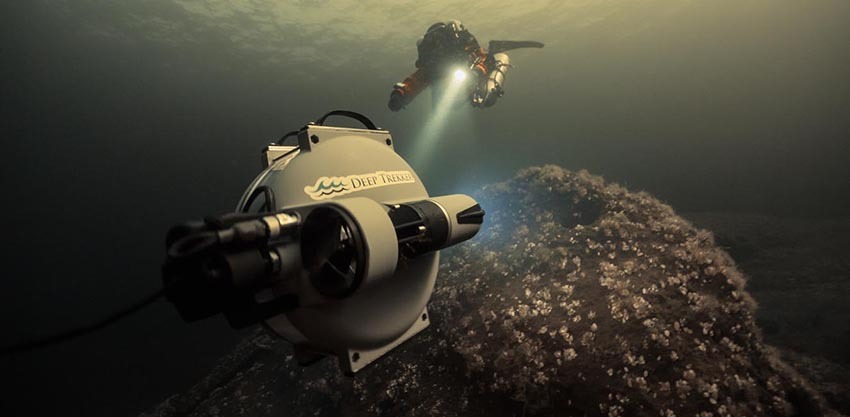 In complex operations, divers and ROVs can work collaboratively, with the ROV assisting by providing real-time video feeds, additional lighting, or support with heavy lifting. This allows divers to concentrate on tasks that require human judgment and intervention, while leveraging the ROV’s capabilities to enhance their efficiency and safety. By integrating ROVs, divers can focus on critical, nuanced tasks that demand human expertise, creating a powerful synergy between human skills and technological support that maximizes the overall effectiveness of the operation.
In complex operations, divers and ROVs can work collaboratively, with the ROV assisting by providing real-time video feeds, additional lighting, or support with heavy lifting. This allows divers to concentrate on tasks that require human judgment and intervention, while leveraging the ROV’s capabilities to enhance their efficiency and safety. By integrating ROVs, divers can focus on critical, nuanced tasks that demand human expertise, creating a powerful synergy between human skills and technological support that maximizes the overall effectiveness of the operation.
Ultimately, the decision to use divers, ROVs, or a combination of both depends on factors such as the nature of the task, depth, environmental conditions, safety considerations, and cost-effectiveness. By recognizing the unique strengths of divers and ROVs and employing them strategically, organizations can harness the benefits of both approaches and achieve optimal results in underwater operations. It's not about choosing one or the other, but rather utilizing the right tool for the right job to ensure the best possible outcomes.
As technology advances in the evolving landscape of underwater work, ROVs will continue improving, with innovations that will further enhance their capabilities and meet industry needs more effectively.
While a common concern is whether ROVs will replace divers, the reality is that ROVs and divers will continue to complement each other. The goal is to create a more effective team, making operations safer, so that each can play to their strengths respectively.
Deep Trekker ROVs are purpose-built for versatility, making them exceptional tools to complement divers in a variety of applications and industries. Constructed with industrial-grade materials such as stainless steel, anodized machined aluminum, and carbon fiber, they are designed to withstand even the harshest environments.
Our team of industry professionals is always available to offer expert guidance and address any questions you may have regarding the integration of submersible robots into your next project.
Whether you are involved in underwater inspection, search and recovery, aquaculture, environmental monitoring, or any other marine application, we are here to help you understand how our ROVs can meet your specific needs.
When you are ready to acquire your own Deep Trekker vehicle, reach out to us for a customized quote tailored to your requirements.
July 30th, 2021
Learn all about remotely operated vehicle pilots: how to become one,...
November 5th, 2024
Learn more about what sonar is and its many uses. Read...
December 23rd, 2021
ROVs and sonar can be used to inspect underwater structures such...